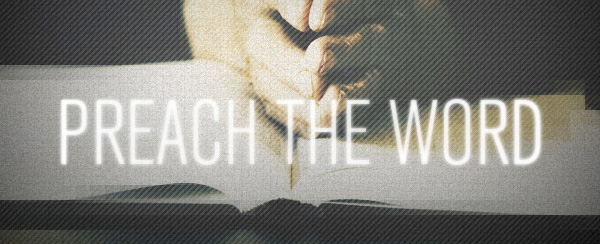“Pray also for us, that God may open to us a door for the word, to declare the mystery of Christ . . . that I may make it clear, which is how I ought to speak.” – Colossians 4:3-4
Clarity is one of the few essential characteristics of preaching. A sermon success will indeed rise and fall on the degree to which it is clear. Therefore, every faithful preacher ought to continually strive to increase the clarity of exposition in his sermons. An increase in clarity simply means an increase in the exposition’s understandability and memorability. In Christ-Centered Preaching Bryan Chapell offers an incredibly useful way of testing for clarity (which he deals with under the label of “unity”) with his “3am Test”:
You will have unity when you can demonstrate that the elements of the passage support the theme of your message and you can pass the “3 a.m. test.” The 3:00 am test requires you to imagine a spouse, a roommate, or parishioner waking you from your slumber with this simple question: “What’s the sermon about today, Preacher?” If you cannot give a crisp answer, the sermon is probably half-baked. Thoughts you cannot gather at 3:00 a.m. are not likely to be caught by others at 11:00 a.m. – Christ-Centered Preaching, 47.
In recent weeks I have discovered another useful test: The Sermon Notes Insert. Earlier this year I spent some time at The Church at Brooks Hills and was struck by the expansive “Message Notes” insert Platt provides for his congregation the week’s bulletin.1 After a few months of going back and forth on doing something similar, we finally took the plunge at IDC and I have been pleasantly surprised with the feedback.2 Like everything in ministry, the adjustment comes with advantages and disadvantages.
TWO ADVANTAGES OF A SERMON NOTES INSERT
First, it provides a measuring stick for a sermon’s clarity. I use the insert to provide the congregation with the sermon’s main point, divisions, as well as any applications that might be particularly helpful. The insert basically answers the question, “What do I want a hearer to remember and meditate on from this sermon?” The question presupposes two things: 1) the sermon actually has something worth remembering, and 2) the sermon has discernible structure. An insert then is one way to easily gauge a sermon’s memorability and understandability. In the weeks since we started offering an insert I have noticed during sermon preparation that I am more intentional to be precise with language. If a teenager has difficulty following along with the insert, your sermon is just too boring, complicated, or verbose. Maybe even it’s all three.
There have been a few weeks where quite a few members missed a fill-in-the-blank, which revealed to me that I wasn’t as clear on the respective point as I intended to be. The insert also helps me have a tool to encourage young and inexperienced preachers with. If I struggle to put together an insert from their manuscript, then it is overwhelmingly likely the manuscript needs work before delivery.
Second, it invites the congregation to focused hearing. If the insert is done well it won’t inhibit listening (see disadvantage #2 below), but it will invite listening. I have observed our congregation more engaged through the entire preaching event because they have a template to aid listening. The insert also provides church members with a simple resource to fuel meditation throughout the week in small groups or devotional study.
Although these two points are sufficient in and of themselves to encourage some churches to use an insert, each advantage has a corresponding and potential disadvantage.
TWO POTENTIAL DISADVANTAGES OF A SERMON NOTES INSERT
First, it encourages “sound bite” preaching. In some ways the insert is a collection of sermonic sound bites. That’s ok as long as they have an evident flow and unity, but I can see a situation where a pastor feels somewhat constrained by the insert’s sound bite reality.
Second, it changes the congregation’s posture from listening to note-taking. Martyn Lloyd-Jones understand this danger when he famously said, “I have often discouraged the taking of notes while I am preaching. . . . The first and primary object of preaching is not only to give information. It is, as Edwards says, to produce an impression. It is the impression at the time that matters, even more than what you can remember subsequently. . . . While you are writing your notes, you may be missing something of the impact of the Spirit.”3 Although I am inclined to believe The Doctor is too strong on this point, his concern is nevertheless valid. An insert will be a valuable resource from some church members and not for others. The key here is to make it available, but not required.
I believe the advantages of a sermon notes insert outweigh its disadvantages, but every pastor and congregation is different. Should you think an insert could serve your church, go for it. If not, maybe there will be a time in the future when it will.

